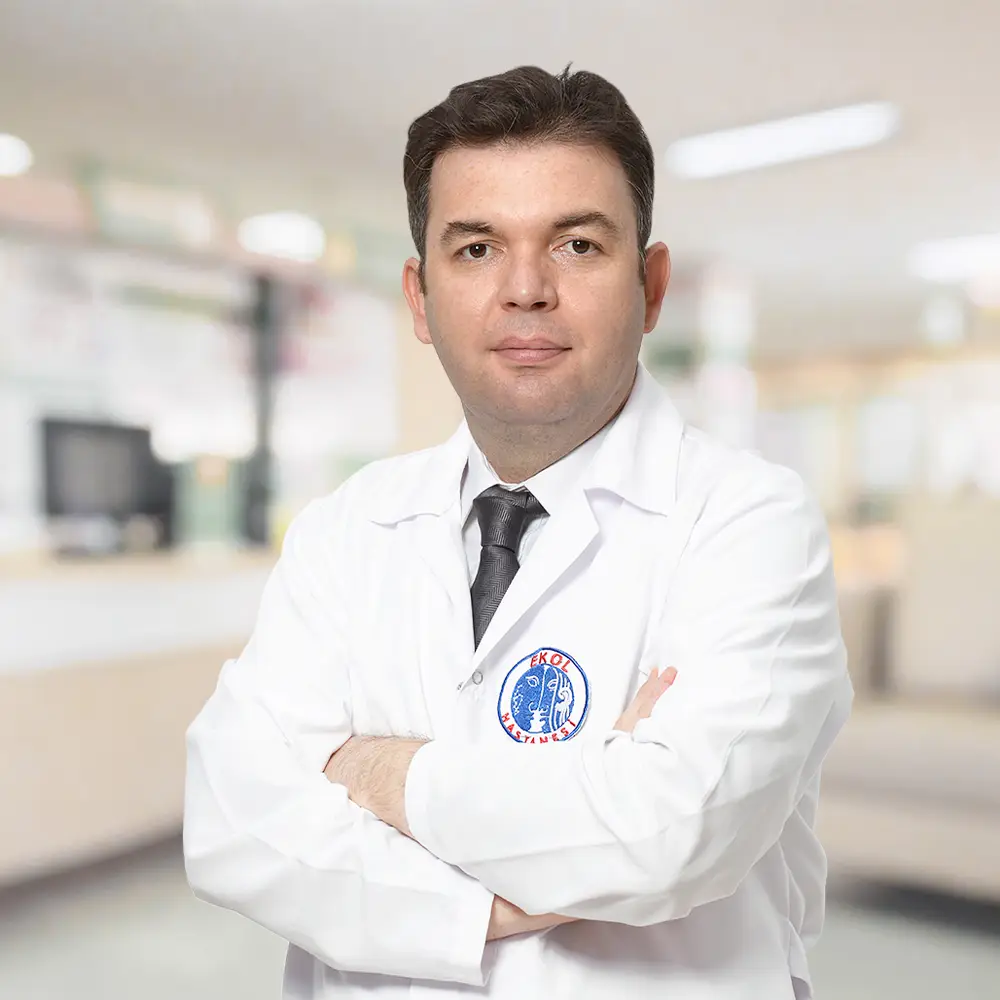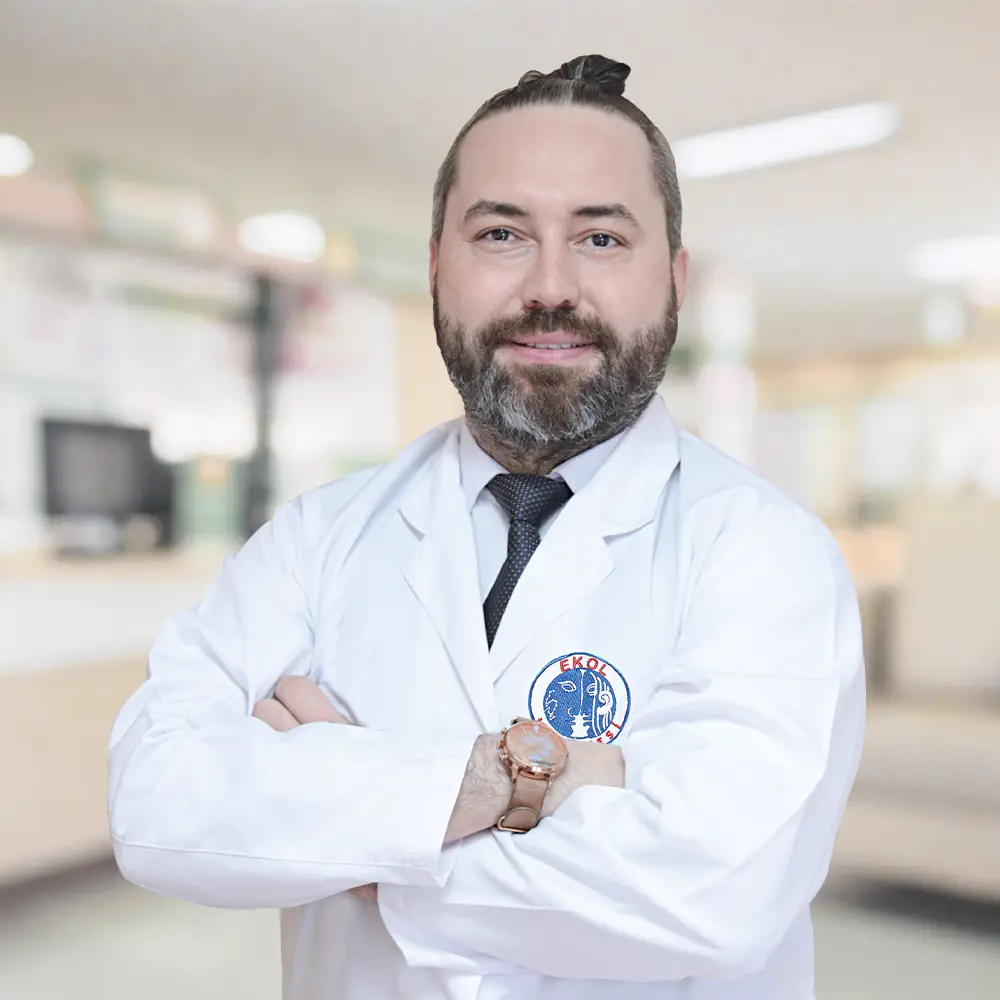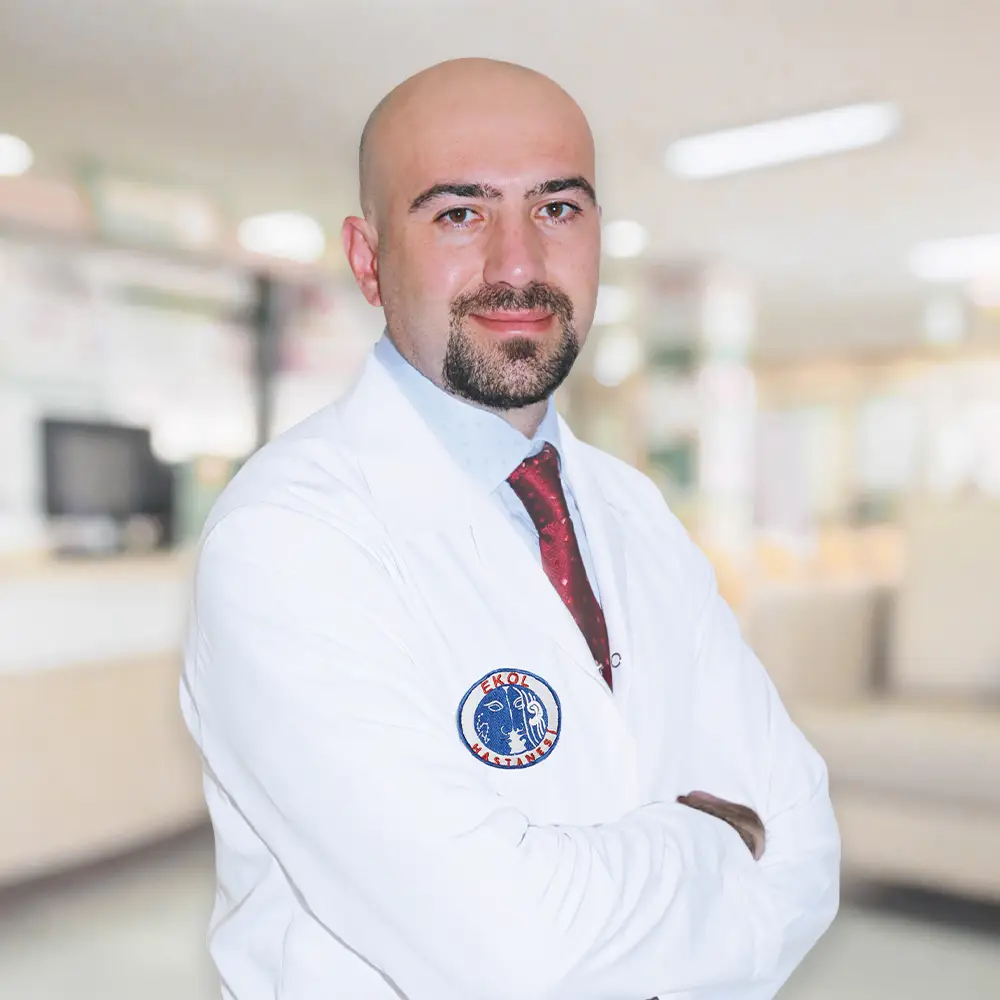Sagging eyelids or under eye bags can make you look older and more tired than you are. That is why most of the patients decide to undergo a blepharoplasty operation. Eye lid aesthetics operations can make your face look 10 years younger and help you have that fresh look again!
15 YEARS OF EXPERIENCE IN AESTHETIC SURGERIES WITH SATISFACTION GUARANTEE!
Eyelid aesthetics, commonly referred to as blepharoplasty, is a surgical procedure focused on enhancing the appearance of the eyelids.
This procedure can be performed on the upper lids, lower lids, or both, and is designed to address issues such as drooping eyelids, puffiness, under-eye bags, and wrinkles that can make a person look older or fatigued.
By removing excess skin, fat, and sometimes muscle, blepharoplasty can rejuvenate the area surrounding the eyes. The surgery is not just cosmetic; in some cases, it improves vision by lifting droopy eyelids out of the patient's field of sight.
Performed by a skilled plastic surgeon, it can offer a more youthful and refreshed look. Recovery time varies, but patients typically experience minimal scarring and lasting results. As with any surgery, it’s important to consider the potential risks and benefits.
Blepharoplasty, commonly referred to as eyelid surgery, is performed to improve the appearance of the eyelids by addressing issues such as excess skin, fat, and muscle. The procedure can be done on either the upper eyelids, lower eyelids, or both, depending on the patient's specific needs. Here is an overview of how blepharoplasty is typically performed:
1. Consultation and evaluation: Before the surgery, you will have a consultation with a skilled plastic surgeon. During this consultation, your surgeon will assess your eyelid area, discuss your goals, and review your medical history. They will determine the best approach and discuss the potential risks and benefits with you.
2. Anesthesia: Blepharoplasty can be performed using local anesthesia with sedation or general anesthesia, depending on the extent of the procedure and your surgeon's preference. Your surgeon will discuss the anesthesia options with you during the pre-operative consultation.
3. Incision placement: The surgeon will make precise incisions in the natural creases or folds of the eyelids to minimize visible scarring. For upper eyelid surgery, the incision is typically made in the crease of the upper eyelid. For lower eyelid surgery, the incision may be made just below the lash line or inside the lower lid (transconjunctival approach).
4. Tissue modification: Once the incisions are made, the surgeon will access the underlying tissues. Depending on the specific concerns, they may remove excess skin, fat, and sometimes muscle. The goal is to create a smoother, more youthful eyelid contour.
5. Closure: After making the necessary modifications, the surgeon will carefully close the incisions with fine sutures or surgical adhesive. These sutures are typically removed within a week or two after the surgery.
6. Recovery and post-operative care: Following the procedure, you will be monitored in a recovery area until you are awake and stable. It is common to experience some swelling and bruising around the eyes, which can be managed with cold compresses and prescribed medications. You will receive post-operative care instructions from your surgeon, including how to care for your incisions and manage any discomfort.
7. Healing and results: It may take several weeks for swelling and bruising to subside completely. Over time, the scars from the incisions will typically fade and become less noticeable. Most patients can return to their normal daily activities within a few weeks, although strenuous activities should be avoided during the initial stages of recovery.
It's important to note that the specific techniques used in blepharoplasty may vary based on the patient's individual anatomy and goals. A skilled plastic surgeon will customize the procedure to achieve the desired results while maintaining a natural and balanced appearance. Patients should follow their surgeon's recommendations for a successful and safe recovery.
The recovery time after blepharoplasty, or eyelid surgery, can vary from person to person, depending on factors such as the extent of the procedure, individual healing rates, and the patient's overall health. However, here is a general timeline of what to expect during the recovery process:
1. Immediate post-operative period (first 24-48 hours):
2. First week:
3. Second week:
4. Weeks 3-6:
5. Long-term recovery (months):
It's essential to follow your surgeon's post-operative care instructions diligently to promote proper healing and optimize your results. These instructions may include taking prescribed medications, avoiding sun exposure, using recommended skincare products, and attending follow-up appointments with your surgeon to monitor your progress.
Keep in mind that individual recovery experiences can vary, so it's crucial to communicate openly with your surgeon about any concerns or questions you may have during your recovery process. Additionally, every patient's results may differ based on their unique anatomy and the specific goals of the procedure.
The results of blepharoplasty, like any cosmetic procedure, are long-lasting but not entirely permanent. While the surgery can provide a significant improvement in the appearance of the eyelids and create a more youthful look, it cannot halt the natural aging process or prevent further changes in the eyelid area. Here's what you can typically expect regarding the longevity of blepharoplasty results:
It's essential to have realistic expectations about the longevity of blepharoplasty results. While the procedure can provide a substantial and lasting improvement, it's not a guarantee against future aging. Regular follow-up visits with your surgeon and ongoing skincare and sun protection are essential to maximize the longevity of your blepharoplasty results.
Ultimately, the individual experience of results will vary, so it's important to consult with a board-certified plastic surgeon who can provide you with personalized information based on your unique situation and goals.
While blepharoplasty (eyelid surgery) can produce significant improvements in the appearance of the eyelids, it is normal to have concerns about visible scars after the procedure. The extent and visibility of scars can vary depending on several factors, including the surgical technique used, individual healing characteristics, and the skill of the surgeon. Here's what you should know about scars after blepharoplasty:
It's important to discuss your concerns about scarring with your plastic surgeon during your consultation. A skilled and experienced surgeon will explain the incision techniques they plan to use and provide realistic expectations about scarring based on your unique situation. While there may be some degree of scarring after blepharoplasty, the goal is to minimize it and achieve natural-looking results. Over time, with proper care and healing, scars should become less noticeable.
 Operating Doctor Cenk Melikoğlu was born in Görele, in 1978. In 2002, he graduated from Dokuz Eylül University Faculty of Medicine. Between the years of 2003 and 2010, he did his specialization in İzmir Atatürk Training and Research Hospital, Aesthetic and Plastic Surgery Clinic. In 2015, he worked as a guest lecturer in the American Hospital of Paris. When abroad, he especially focused on the transfer of free vascular lymph nodes for lymphedema treatment, in the field of microsurgery. He participated in numerous training and meetings in this area. There are more than 30 articles in the literature, which were published in national and international journals. Since 2016, he has been working in İzmir Özel Ekol ENT Hospital in Aesthetic Plastic Surgery and Cosmology Clinic. He speaks English well. He is married and has one child.
His special interests are; Breast Aesthetics & Dual-Plan Method, Aesthetic nose surgery, Lymphedema surgery, Endoscopic facial stretching, Aesthetic body shaping surgery (abdominal stretching, liposuction, aesthetic breast surgery), Hair transplantation with FUE method, Migraine surgery, Gynecomastia correction, Genital aesthetics (especially penis enlargement), Lymphedema Treatment (Laser Assisted, With Microcannula Lymph Protective Method), Penis Enlargement (Length & Thickness Combined Method), Migraine Surgery (Closed Method with Scopy). He was entitled to receive the "Proficiency Certificate" by being successful in the examination, which was held by the Turkish Plastic Surgery Association in 2010. In 2015, he participated in a scientific competition by Gülhane Military Medical Academy with his study 'Saddle-nose deformity repair with micro-plate-adapted costal cartilage.’ He has won the first place in the field of surgical medicine. In 2018, he worked at Weiss Memorial Hospital in Chicago, USA for three months in April, May and June on advanced techniques on gender reassignment and penis enlargement in men. He is still continuing his academic and scientific studies.
Operating Doctor Cenk Melikoğlu was born in Görele, in 1978. In 2002, he graduated from Dokuz Eylül University Faculty of Medicine. Between the years of 2003 and 2010, he did his specialization in İzmir Atatürk Training and Research Hospital, Aesthetic and Plastic Surgery Clinic. In 2015, he worked as a guest lecturer in the American Hospital of Paris. When abroad, he especially focused on the transfer of free vascular lymph nodes for lymphedema treatment, in the field of microsurgery. He participated in numerous training and meetings in this area. There are more than 30 articles in the literature, which were published in national and international journals. Since 2016, he has been working in İzmir Özel Ekol ENT Hospital in Aesthetic Plastic Surgery and Cosmology Clinic. He speaks English well. He is married and has one child.
His special interests are; Breast Aesthetics & Dual-Plan Method, Aesthetic nose surgery, Lymphedema surgery, Endoscopic facial stretching, Aesthetic body shaping surgery (abdominal stretching, liposuction, aesthetic breast surgery), Hair transplantation with FUE method, Migraine surgery, Gynecomastia correction, Genital aesthetics (especially penis enlargement), Lymphedema Treatment (Laser Assisted, With Microcannula Lymph Protective Method), Penis Enlargement (Length & Thickness Combined Method), Migraine Surgery (Closed Method with Scopy). He was entitled to receive the "Proficiency Certificate" by being successful in the examination, which was held by the Turkish Plastic Surgery Association in 2010. In 2015, he participated in a scientific competition by Gülhane Military Medical Academy with his study 'Saddle-nose deformity repair with micro-plate-adapted costal cartilage.’ He has won the first place in the field of surgical medicine. In 2018, he worked at Weiss Memorial Hospital in Chicago, USA for three months in April, May and June on advanced techniques on gender reassignment and penis enlargement in men. He is still continuing his academic and scientific studies. He graduated from Samsun Ondokuz Mayıs University Faculty of Medicine in 2011. Between 2013-2019, he received his specialty training in Plastic Reconstructive and Aesthetic Surgery Department at Ankara Dışkapı Training and Research Hospital. He successfully has the Turkish Plastic Reconstructive and Aesthetic Surgery qualification certificate in the 2018 exam. He is a member of the Aesthetic Plastic Surgery Association and the Turkish Plastic Reconstructive Surgery Association and the Turkish Medical Association.
He is fluent in English.
Dr. Anıl Özpak is married and has 2 children.
Domain Knowledge: Rhinoplasty Eyelid aesthetic Face rejuvenation (face-neck lifting) Otapostatis Breast aesthetics (enlargement, reduction, lifting) Correction of gynecomastia Abdominal stretching Tummy Tuck Arm - Thigh lift Genital aesthetics Lipoedema surgery Liposuction Fat injections Minimal aesthetic applications (filling- neurotoxin) Skin Tumours Facial Traumas Hand Aesthetic surgeries
He graduated from Samsun Ondokuz Mayıs University Faculty of Medicine in 2011. Between 2013-2019, he received his specialty training in Plastic Reconstructive and Aesthetic Surgery Department at Ankara Dışkapı Training and Research Hospital. He successfully has the Turkish Plastic Reconstructive and Aesthetic Surgery qualification certificate in the 2018 exam. He is a member of the Aesthetic Plastic Surgery Association and the Turkish Plastic Reconstructive Surgery Association and the Turkish Medical Association.
He is fluent in English.
Dr. Anıl Özpak is married and has 2 children.
Domain Knowledge: Rhinoplasty Eyelid aesthetic Face rejuvenation (face-neck lifting) Otapostatis Breast aesthetics (enlargement, reduction, lifting) Correction of gynecomastia Abdominal stretching Tummy Tuck Arm - Thigh lift Genital aesthetics Lipoedema surgery Liposuction Fat injections Minimal aesthetic applications (filling- neurotoxin) Skin Tumours Facial Traumas Hand Aesthetic surgeries He graduated from Eskişehir Osmangazi University Faculty of Medicine in 2008. He studied at Kaunas Medical Faculty between the years 2007 and 2008. He completed his specialization on Plastic, Reconstructive and Aesthetic Surgery Department at Afyon Kocatepe University between the years 2009 and 2014. He has 5 original articles published in national and international scientific journals, and 13 verbal and written academic papers presented in national congresses. He continues the academic studies. He received the competence certificate of Turkish Plastic Reconstructive and Aesthetic Surgery after his success in the exam in 2016. He did well in European Plastic Surgery Competence Written Exam that took place in Brussels in 2019.
Fields of Interest: Rhinoplasty Neck lift surgery, Face lift Surgery, Otoplasty, Tummy tuck, Liposuction, Breast augmentation / reduction / mastopexy, Gynecomastia, Genital aesthetics, Blepharoplasty, Lipoedema surgery, Penis enlargement (lengthening and thickening surgery), Fat injections
He graduated from Eskişehir Osmangazi University Faculty of Medicine in 2008. He studied at Kaunas Medical Faculty between the years 2007 and 2008. He completed his specialization on Plastic, Reconstructive and Aesthetic Surgery Department at Afyon Kocatepe University between the years 2009 and 2014. He has 5 original articles published in national and international scientific journals, and 13 verbal and written academic papers presented in national congresses. He continues the academic studies. He received the competence certificate of Turkish Plastic Reconstructive and Aesthetic Surgery after his success in the exam in 2016. He did well in European Plastic Surgery Competence Written Exam that took place in Brussels in 2019.
Fields of Interest: Rhinoplasty Neck lift surgery, Face lift Surgery, Otoplasty, Tummy tuck, Liposuction, Breast augmentation / reduction / mastopexy, Gynecomastia, Genital aesthetics, Blepharoplasty, Lipoedema surgery, Penis enlargement (lengthening and thickening surgery), Fat injections